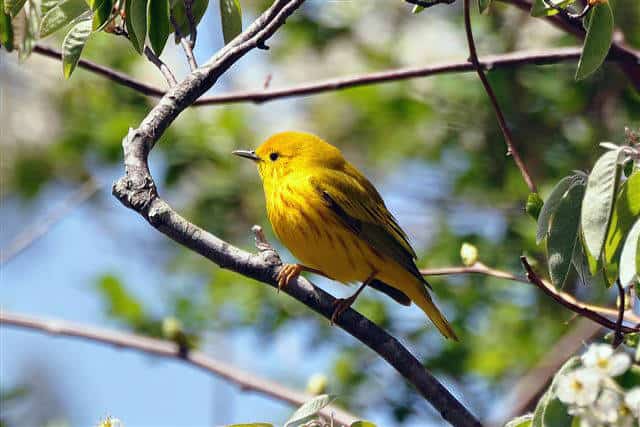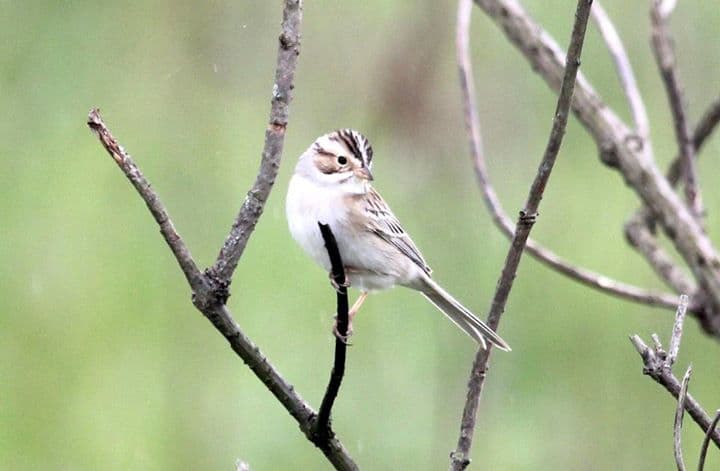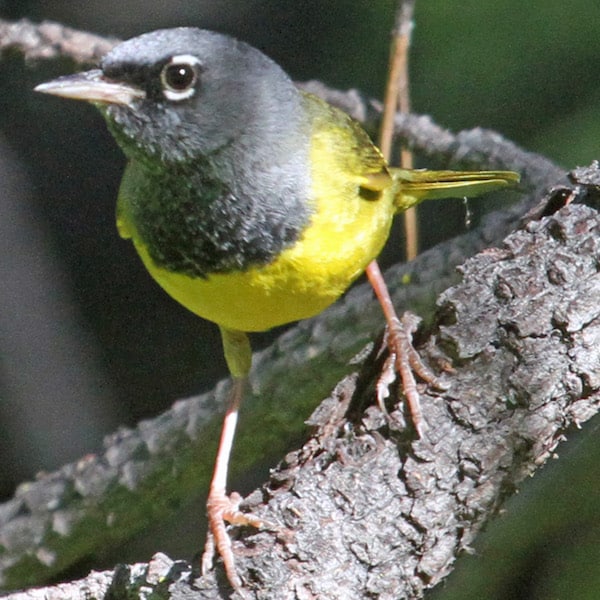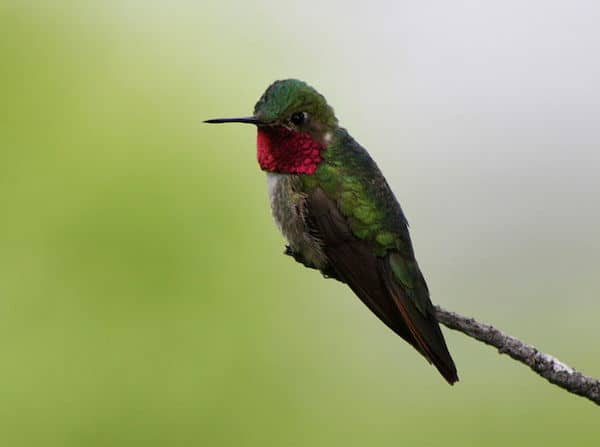The yellow warbler is 4 ½ to 5 inches in length, with a sharp, fine bill. Its body is all yellow, with yellow-green wings, yellow wing bars, and yellow tail patches. The male has bright chestnut-red streaks on its breast. Its black eye is outlined by a thin yellow eye-ring. Plumage varies somewhat by region, with Alaskan birds being grayer, and the Sonoran subspecies paler, than the eastern standard.
Listen For
The basic mating song of the yellow warbler is often written as sweet-sweet-sweeter-than-sweet or sweet-sweet-l’m-so-sweet, but males sing various other songs as well, some of which resemble those of the magnolia or chestnut-sided warbler or the American redstart.
Find It
Yellow warblers arrive in the southern states by late March or early April and are on their breeding grounds in most parts of their range by mid-May. The northernmost birds leave as soon as nesting is finished in July, and the bulk of the population is gone from the United States by late October. They winter primarily from southern Mexico to Peru and Brazil; small numbers stay in southern California or (rarely) in southern Arizona.
Feeding Behavior
Yellow warblers eat insects and will hop in small, quick steps from branch to branch to forage for the insects in the trees.
Nesting Behavior
Habitat for this species includes riparian willows and cottonwoods, old orchards, farm hedgerows, streamside thickets, suburbs and parks. Yellow warblers build their nests in small trees or bushes and usually keep them within ten feet of the ground, although they have been found up to 40 feet.
Wow!
If a yellow warbler’s nest has been parasitized by a brown-headed cowbird, the warbler will abandon the old nest and begin building a new one right on top of the old. This has resulted in nests up to six tiers high!




